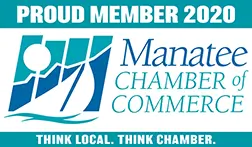Leaking Roof? Find Out Why and What to Do About It
A shingle roof will last you as long as 20 years. But its true lifespan depends heavily on local weather and how well it’s maintained.
Among the most common homeowner issues is a leaking roof. At first, it may seem like a small annoyance—but left untreated, it can result in structural damage, mold, and costly repairs. The key? Timely roof repair.
In this post, we’ll show you how to identify a roof leak and explore the most common causes.
Common Causes of a Leaking Roof
1. Attic Vent Leaks
Attic vents are designed to improve airflow and reduce moisture, but they can sometimes let water in—especially during storms. Aging or damaged vents are frequent culprits in attic leaks.
2. Leaking Vent Pipe
Pipes that penetrate the roof—like plumbing or exhaust vents—are sealed with caulk or flashing. Over time, sun exposure degrades these seals, creating pathways for water intrusion.
3. Damaged or Missing Shingles
Strong winds and storms can knock shingles loose or crack them, exposing your underlayment to moisture. Even tiny cracks or gaps can lead to long-term water damage.
4. Chimney Leaks
Cracks in the flashing around chimneys are one of the most common—and least visible—sources of leaks. Look for signs of moisture buildup around the chimney’s exterior.
5. Roof Valley Leaks
Roof valleys are designed to channel water off your roof, but poor construction or debris buildup can lead to pooling water and leaks. Regular cleaning and inspections are key.
6. Clogged Gutters
Blocked gutters can lead to roof-edge leaks. When water can’t drain properly, it backs up and seeps under your shingles—eventually making its way into your walls or ceilings.
7. Skylight Leaks
Skylights are great for natural light—but if their seals or flashing are compromised, they’re also leak-prone. Keep an eye out for moisture around the frame or ceiling below.
8. Loose Nails
Nails can work themselves loose over time due to age, storm damage, or poor workmanship. When that happens, it can expose the area below the shingle to the elements.
9. Ice Dams
Ice dams trap melting snow behind a ridge of frozen ice at the edge of your roof. This leads to water seepage under shingles. While less common in Florida, it’s a major issue up north.
10. Dormer Leaks
Dormers can develop issues like cracked trim, rotted wood, or missing siding, all of which allow water to creep in during storms.
How to Spot the Signs of a Roof Leak
1. Ceiling Spots
Brown or yellowish stains on your ceiling? That’s a strong sign water is getting through. The size of the spot may vary, but the cause is usually a roof leak.
2. Dripping Water
If you hear or see water dripping during or after a storm, that’s a leak you’ll want to fix right away. Be sure to check your attic even if you don’t see signs inside.
3. Moist Drywall
Spongy or damp drywall—especially around windows, outlets, or ceilings—is another red flag. This can pose structural risks and electrical hazards.
4. Bubbling or Peeling Paint
Interior paint that bubbles or peels is often a symptom of trapped moisture. It may not seem like much at first, but it often indicates deeper damage in the wall or ceiling.
Need a Roof Inspection in Sarasota?
If you’re seeing the warning signs of a leaking roof, don’t wait for the next downpour. Florida’s rainy season and hurricanes can make even a small leak a big problem fast.
DIY fixes might work temporarily, but a professional inspection ensures the leak is truly resolved. Contact SonShine Roofing today—we’ve been helping Sarasota-area homeowners since 1987 with expert repairs and comprehensive inspections.













